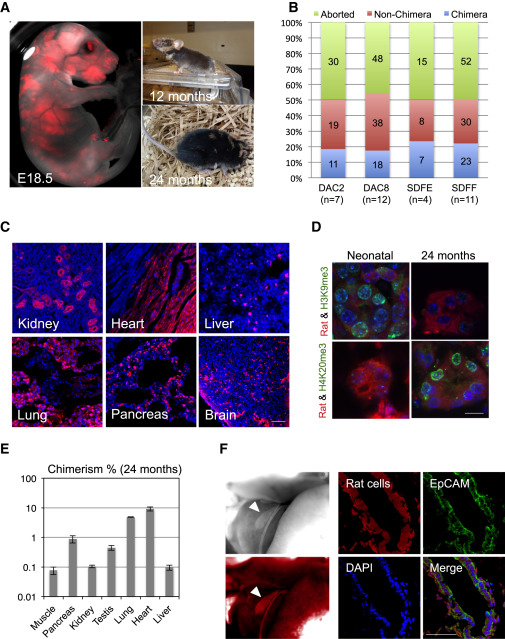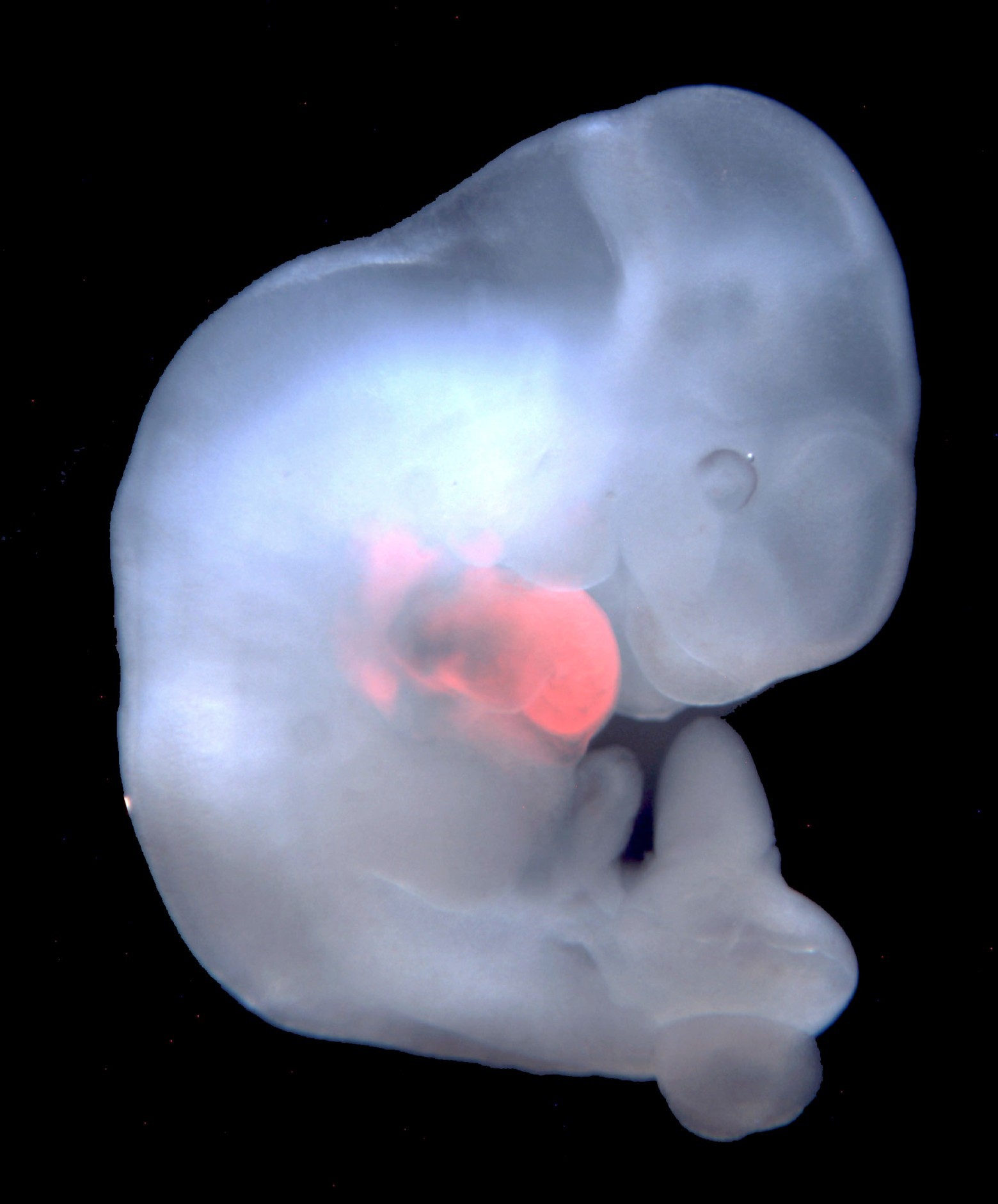Genetics have grown a 4-week-old pig embryo with the beginnings of human organs

The rat and mouse chimera shows the normal development of the embryo (B) and internal organs: kidney, heart, liver, lung, pancreas and brain inside the host organism (C)
Pluripotency is a unique property of embryonic stem cells that can turn into any of the 200 known types of somatic cells, in accordance with a given program of embryo development and other conditions. Scientists have learned to take these cells from human embryos and cultivate them in the laboratory. Numerous experiments have shown that at the same time, pluripotent cells retain the ability to differentiate into any cell types, including sperm and egg cells.
But in the laboratory it is very difficult to grow a full-fledged organ from stem cells, since it is almost impossible to recreate human physiology from scratch. Scientists are not yet able to program cells with such precision. We need a natural environment where the program of cell development in the right organ is activated by itself. The ideal medium would be a human or primate embryo, but such tests are prohibited by law. Therefore, scientists have found a way out in using embryos of animals physiologically close to humans - pigs and cattle. In developed countries, experiments on these embryos are still allowed.
Chimeras, organisms consisting of genetically heterogeneous cells, are excellently suited for this task. Inside chimeras you can grow the organs of another organism. A number of such experiments were carried out by a group of scientists from the Salk Institute for Biological Research (California). Including they managed to create for the first time a chimera of a pig embryo with the beginnings of human organs.
')
Chimeras are very interesting organisms from a scientific point of view. They can be a valuable tool for scientific research with the ability to use them in clinical trials and for organ transplantation.
Now the situation with donor organs is very tense. For example, the average waiting time for a kidney is about 10 years. The average lifespan on dialysis is 5 years. If the technique of growing chimeras is brought to mind, then a suitable kidney can be grown much faster while the person is still alive.
Using the CRISPR-Cas9 genetic editing technique and the latest stem cell processing technologies, scientists successfully implanted stem cells into the embryo and raised various rat organs - the pancreas, heart and eyes - in the mouse's body. This experiment confirmed the conceptual possibility of this method of obtaining donor organs.
The researchers then implanted pluripotent human cells into pig embryos, examining the development of human tissues and organs. This is the first step to more detailed research on the growth of human organs in other organisms, suitable in size, physiology and anatomy.

Cells extracted from their pluropotent rat stem cells develop in the heart within the genetically modified mouse embryo
In 2015, a group of scientists led by Ispisua Belmonte created the first chimera, following the development of human cells in a non-viable mouse embryo. Now they have gone further, using the technique of genetic editing CRISPR-Cas9 in order to guide the development of pluripotent cells into specific organs.
Using genetic editing CRISPR-Cas9, scientists changed the host embryo by turning off the genes that are responsible for the development of a specific organ - for example, the pancreas. Then, the stem cells of another animal (rat) with the active pancreas gene are placed in the embryo. The embryo itself develops absolutely normally in the body of a surrogate mother, except for the fact that he has a foreign pancreas.
Exactly the same experiments were carried out with other organs in the rat and mouse chimera — the eye and the heart. Scientists also discovered that pluripotent rat cells unexpectedly formed a gallbladder in a mouse embryo — an organ that is absent in rats. This indicates that the pluropotent cells of the donor are strongly influenced by the host organism and adopt its development programs.
However, the cultivation of human organs in pigs will not be easy. Scientists draw attention to a number of difficulties that arise when crossing highly different living organisms, such as humans and pigs. Such difficulties are absent when growing organs in genetically close organisms. For example, in humans and pigs, the timing of gestation is very different (pigs have 112 days).
However, an experiment with human organs in pig embryos was carried out. Precursors of human tissues began to be created and developed to the four-week age of the embryo, although not with such success rates as in the rat and mouse chimera. Only a small number of cells survived - and they clearly did not develop into something viable. The experiment was stopped to assess the safety and effectiveness of the technology.

When growing chimeras on an industrial scale, people can largely solve the problem of lack of organs for transplantation. You can grow millions of pigs with human livers, pancreas and kidneys.
Scientists recognize that the ultimate goal of research with chimeras may be the cultivation of human organs and tissues on an industrial scale, but this is a very remote perspective. In the coming years, research in this area is of theoretical, rather than practical, significance. They will give a better understanding of human embryonic development and help to study some diseases that cannot be studied in any other way.
The scientific work was published on January 26, 2017 in the journal Cell (doi: 10.1016 / j.cell.2016.12.036).
In the near future, research will continue, unless the authorities ban them. Recently, religious and social organizations of a conservative nature have been protesting against such experiments.
Source: https://habr.com/ru/post/401117/
All Articles